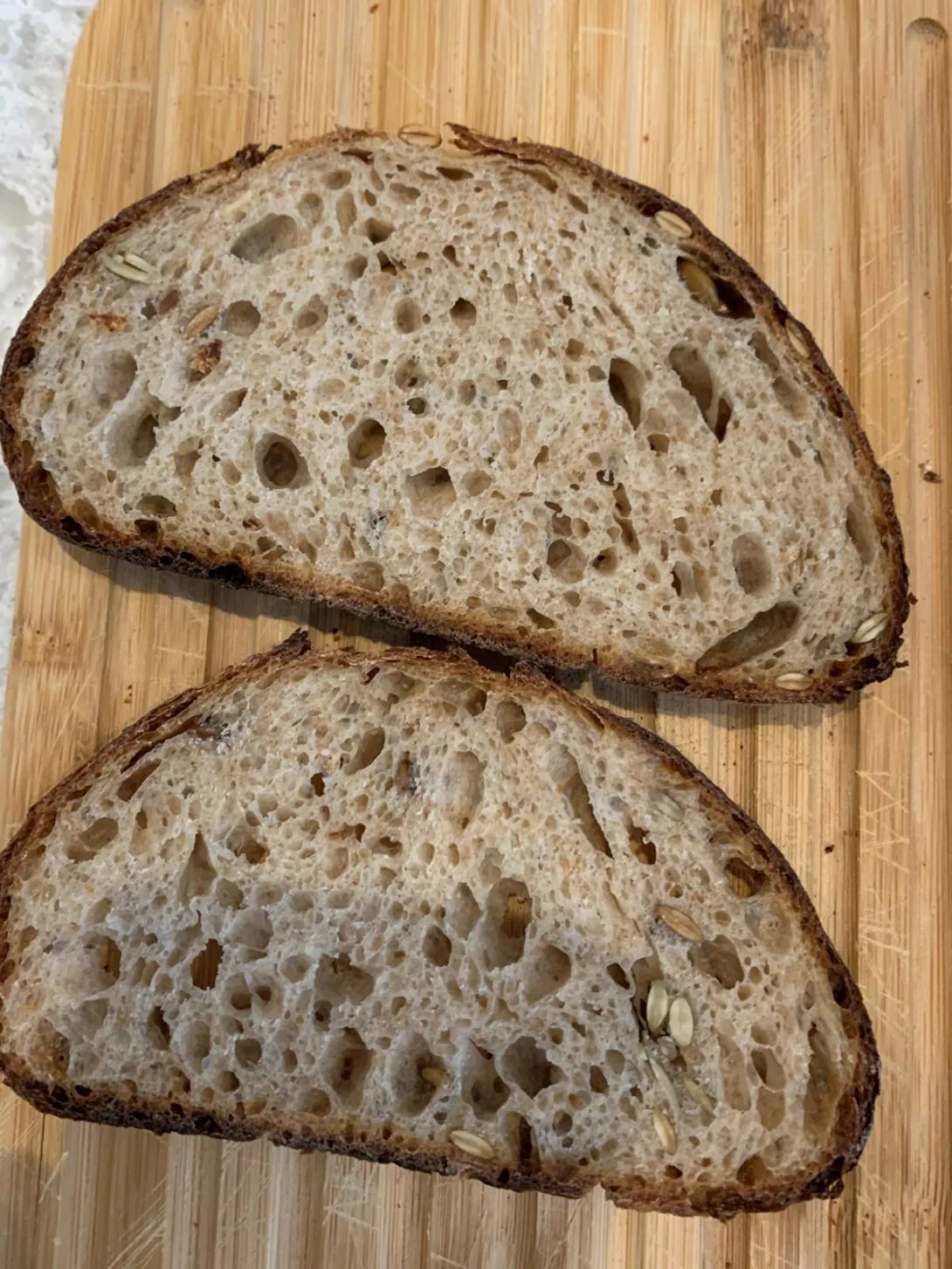

I’ve been doing some experiments with sourdough formulations and am more inclined to believe now that open crumb is mostly a result of fermentation and not fancy skills.
The two photos help demonstrating this line of thought. The dough in the photo is after an overnight fermentation at about 21C. About 6% of the flour weight comes from a starter and it rises a lot, very slowly and very evenly. As a result, the dough contains many, very small, gas pockets that are evenly distributed. The bread I am baking from this dough looks the same - it has a tremendous volume and very small holes.
The crumb picture is from a same-day 71% hydration, 40% whole wheat dough with 15% of the flour coming from a starter. I ferment the dough for 4 hours inside an oven at about 28C. The combined result of the larger amount of starter and the higher temperature is gas production that is more rapid and violent. The result is a more irregular structure with a mix of big and small holes. I am minimally developing this dough with two or three sets of folds and don’t let it rise too much at bulk. I do give it several hours of proofing time until the dough is really inflated but not yet weak. Most of the skill required is how to not deflate and damage the dough when shaping.
Conclusions (unless someone proves me wrong...):
1. To achieve large volume with small holes: use a small amount of starter and bulk ferment for a long time at a lower temperature. Be careful not to deflate the dough while handling.
2. To achieve large volume with irregular crumb: use a larger amount of starter and higher fermentation temperature. Bulk to about 1.5 in volume and proof to maximal volume. Be careful not to deflate the dough while handling.
There are of course many other ways to achieve the same (and much better) results. My point is that optimizing fermentation activity goes a long way in achieving these results without the need for extremely high hydration and elaborate dough development techniques.
“ 1. To achieve large volume with small holes: use a small amount of starter and bulk ferment for a long time at a lower temperature. Be careful not to deflate the dough while handling.”
The crumb pictured above is close to perfect for me. It is light, airy, and at the same time will hold condiments. That’s a winning combo IMO.
I hope that you are onto something. I never considered the percentage of prefermented flour as having a possible affect on the crumb.
Looking forward to hearing more about this concept. I hope others join in and test.
Danny
Thank you Danny. If you would like to try, this is the bread in the photo: http://www.thefreshloaf.com/node/62288/same-day-40-whole-wheat-sourdough
I typically use between 7 and 10% of the flour total in my starter and end up with either or, as far as an open crumb or smaller holes. I agree that fermentation is the key element and the ideal temperature is a big help, but the right amount of gluten development plays a role. I like to proof overnight in the fridge and have found that the higher amount of starter moves too fast to trust it for an overnight rest. Which explains the same day bake in your recipe. I will give your lower hydration recipe a try soon and will let you know how it comes out. Your bread looks great.